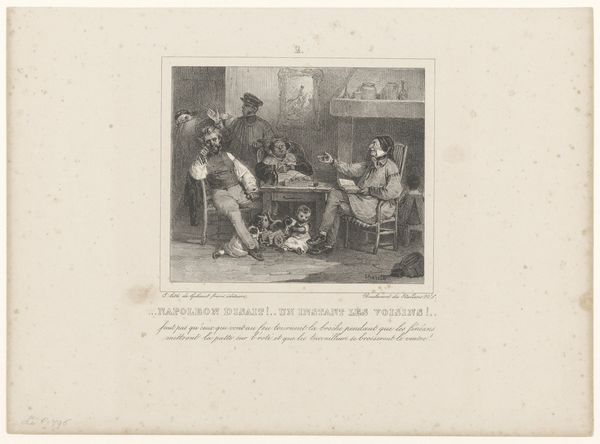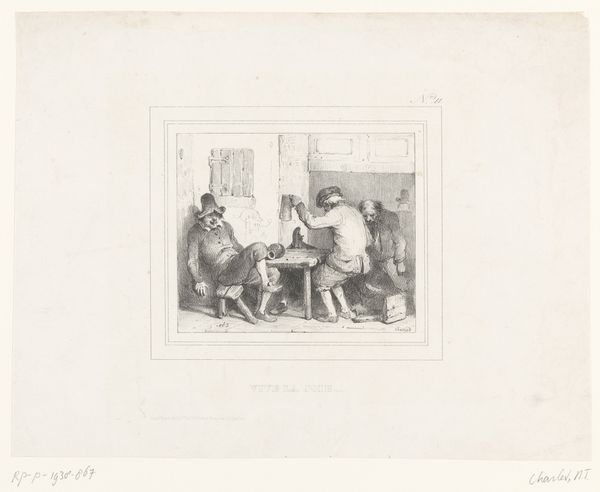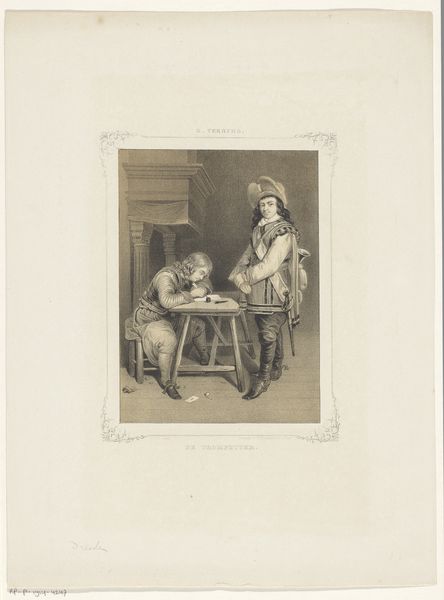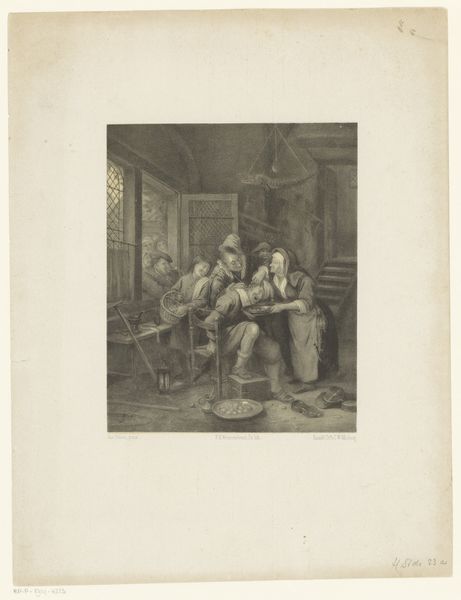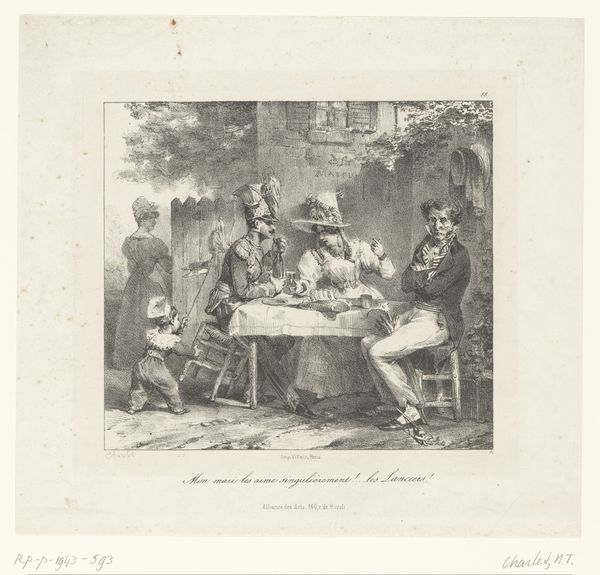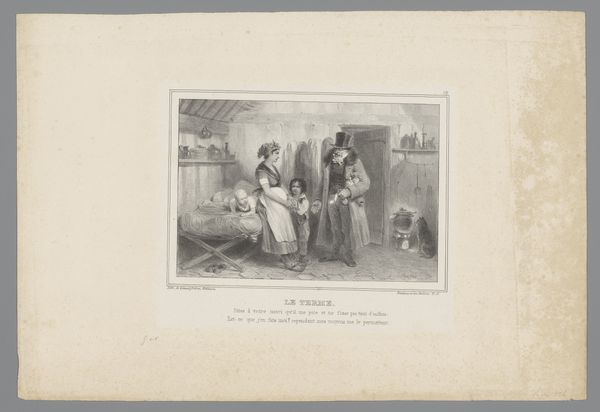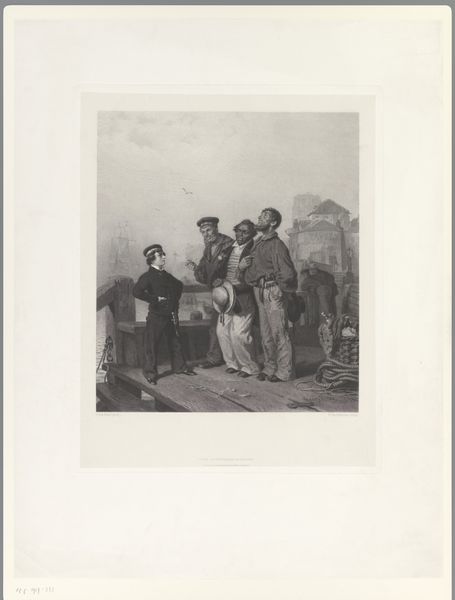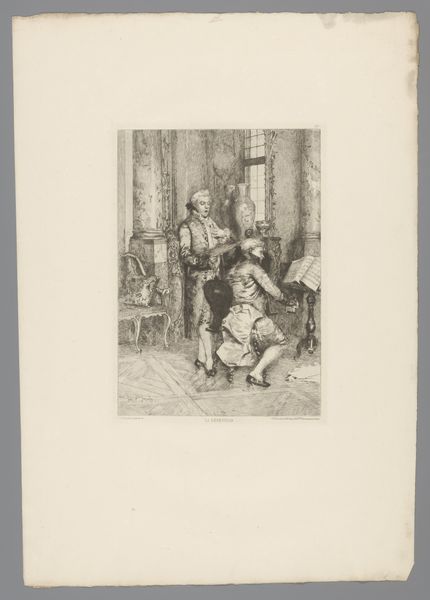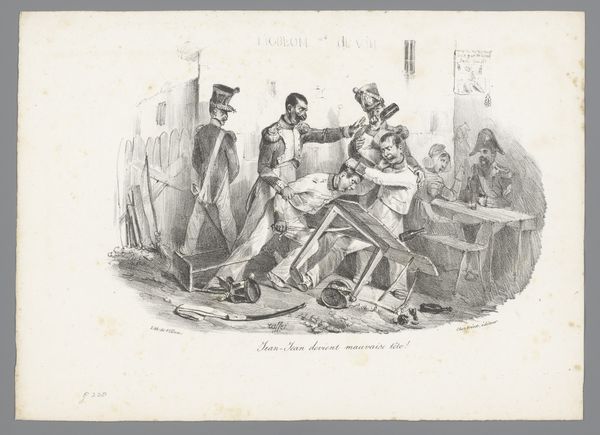
drawing, pencil
#
pencil drawn
#
drawing
#
dutch-golden-age
#
pencil sketch
#
old engraving style
#
group-portraits
#
pen-ink sketch
#
pencil
#
sketchbook drawing
#
pencil work
#
genre-painting
Dimensions: height 271 mm, width 355 mm
Copyright: Rijks Museum: Open Domain
Franciscus Bernardus Waanders created this engraving, titled "Five Drunken Men," during the 19th century. At first glance, it’s a simple scene of revelry, but consider the loaded symbolism of intoxication. Notice the slumped figure, head on the table, a posture echoing the ancient iconography of sleep and death. His companions, caught in various states of inebriation, remind us of Bacchus, the Roman god of wine, whose followers often descended into frenzied states. Throughout art history, intoxication appears as a motif, from the drunken Noah to the feasts of the Renaissance. Each era interprets the loss of control differently, reflecting societal attitudes toward pleasure, morality, and the subconscious. Think of how such moments of abandon capture the human psyche's eternal dance between control and chaos. The image is not just a snapshot of drunken behavior, but a mirror reflecting our collective fascination with altered states and the shadow self. It’s a theme that continues to resurface, evolving, and finding new resonance in each age.
Comments
No comments
Be the first to comment and join the conversation on the ultimate creative platform.
